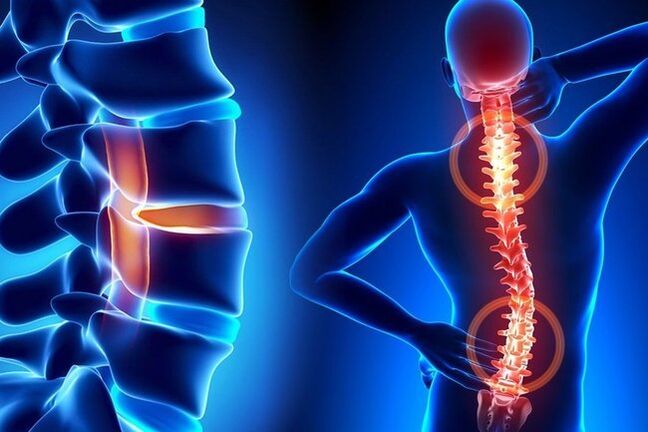Lumbar osteochondrosis is a fairly common disease. But, despite that, it is not recommended to leave his treatment under any circumstances, because that can lead to serious consequences, including disability. The older a person is, the more likely they are to develop a disease such as lumbar osteochondrosis.

Older people with this disease, unfortunately, encounter an average of 90% of cases. As for the special risk group, it includes those who do not lead a sufficiently mobile and active lifestyle. And such people, you see, are the majority now.
The main causes of lumbar osteochondrosis
In the case of uneven load distribution on the chin and trunk muscles, the intervertebral discs are deformed and protrude between the vertebrae. This leads to compression of the spinal nerves. The result is a so-called radicular syndrome characterized by back pain and a significant reduction in lumbar spine mobility.

The situation in which a person's back clears with lumbar osteochondrosis does not happen suddenly, so experts recommend starting to solve the problem before it becomes critical. So it makes sense to test your body for any problems.
The main symptoms of osteochondrosis are as follows:
- traction pain in the lumbar region (in the first phase of the disease the pain is not too strong, but over time it intensifies);
- limitation of mobility in the lumbar region;
- problems while walking;
- numbness of the limbs.
Due to the compression of the intervertebral vessels, even diseases of the internal organs can occur. This happens if the disease is seriously neglected. If you notice any of the above symptoms, it is strongly recommended that you seek immediate help from a specialist: a neurologist or therapist. The doctor will prescribe a comprehensive therapy that can effectively avoid worsening the situation.
How to act in case of an acute attack of osteochondrosis
If your back is unexpectedly crooked at some point, you should know what specific actions to take in anticipation of the ambulance team you need to call. So, we are talking about the following manipulations:
- in no case should a person be helped to correct himself, because such actions can not only cause a new attack of pain, but also lead to an even greater displacement of the vertebrae, which is fraught with the development of paralysis;
- if possible, help the person lie down on the bed or couch;
- do not touch the painful area of the back;
- the victim should be given an anesthetic to reduce pain;
- if the pain syndrome is moderate, the lumbar area should be treated with anesthetic ointment.
Features of treatment of lumbar osteochondrosis
The main task that must be solved in the treatment of lumbar osteochondrosis is the removal of pain. A series of actions should then be taken to restore mobility and eliminate the cause of spinal nerve compression. In principle, the goal of treatment in any case is to achieve complete recovery of the patient. In advanced cases, we talk about the induction of stable remission with the restoration of most motor functions.
Treatment can be conservative and quick. Conservative treatment of lumbar osteochondrosis includes courses of painkillers, as well as general strengthening and anti-inflammatory therapies. Surgical treatment is carried out only in cases where there is a real risk of paralysis on the background of significant displacement of the spinal disc. During the surgery, the hernia is removed, the intervertebral discs are replaced, bone growths, adhesions and scars on the vertebrae are removed.
In some cases, the use of folk remedies can be quite an effective method. For example, you can make herbal wraps. It is also useful to wrap the lumbar region with scarves or shawls made of natural camel or any other wool.
Rehabilitation features for osteochondrosis
In order to consolidate the results of the conducted treatment, it is strongly recommended to take rehabilitation measures with great seriousness. It is better to spend it during remission in medical and physical training centers, which are open in almost every city. Rehabilitation programs are made for each person separately, choosing the complex on an individual basis. It includes all types of treatments, including exercise therapy, massage and physiotherapy.



















